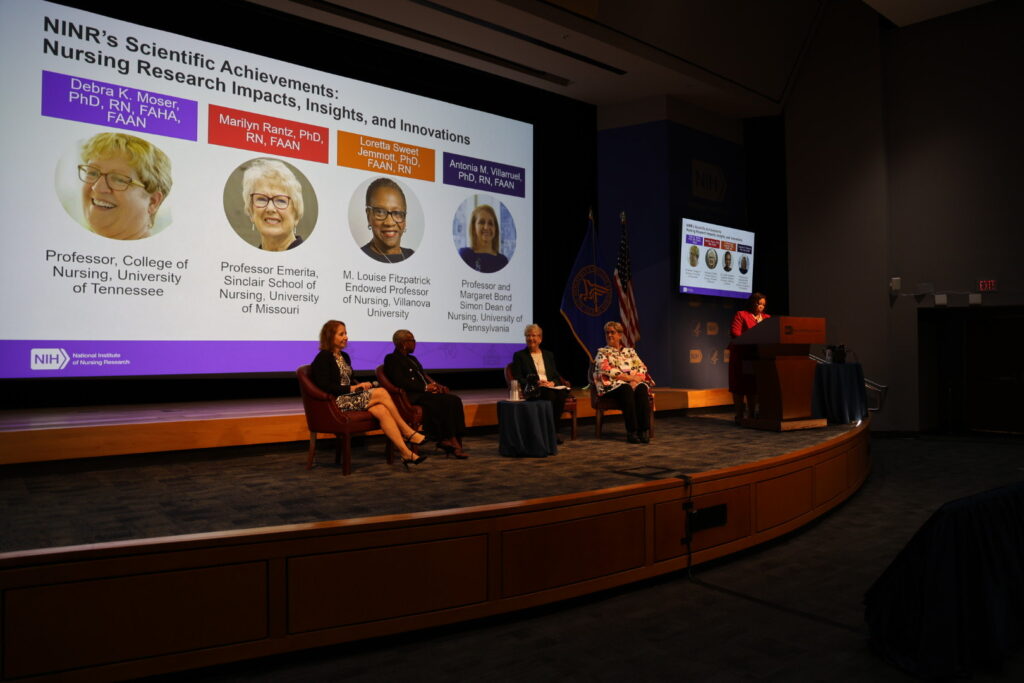BETHESDA, Md. — The National Institute of Nursing Research (NINR) celebrated its 40th anniversary on Sept. 17 with a scientific symposium that highlighted its history, evolving research priorities, and contributions to supporting the nation’s health.
“In the 40 years NINR has existed, the institute has made such important contributions to science, saving the lives of countless Americans,” Ernest Grant, immediate past president of the American Nurse Association, said in an interview with The Click.
In recent months, NINR has undergone notable changes with new leadership to the National Institutes of Health (NIH), its parent agency, causing researchers to shift away from previous priorities centered on health equity and tackling longstanding racial and ethnic inequities in healthcare.
The symposium, held at the Masur Auditorium on the NIH’s Bethesda, Md. campus, aimed to demonstrate how NINR research addresses the “everyday challenges that matter most to people and their health,” according to the NINR website. The day started with remarks from acting NINR Director Courtney Aklin followed by pre-recorded comments from NIH Director Dr. Jay Bhattacharya, who was appointed by President Donald Trump and confirmed by the U.S. Senate in March.

Caption: NINR Director Courtney Aklin introduces Dr. Jay Bhattacharya, NIH Director [Credit: Vincent Guilamo-Ramos]
Unable to attend in person, Dr. Bhattacharya delivered pre-recorded remarks emphasizing the importance of nursing science for the nation’s health and for NIH overall. Aklin highlighted the impactful history of NINR and outlined a vision for the institute’s ongoing role in improving population health.
The new NIH priorities emphasize prevention and health promotion, focusing on reducing chronic disease, promoting healthier food choices, and increasing physical activity as outlined in The MAHA Report. Within the NIH, there has also been dissent, calling for preservation of NIH research priorities based on scientific evidence versus political ideology.
There is a major concern in the scientific health research community about the future of NIH, including NINR. The White House proposed cutting NIH’s overall budget from $48 billion to $27 billion, but the Senate rejected this plan. There was also a proposal to eliminate NINR, an institute that has historically had a modest budget with a 2026 planned budget of $197.7 million, which accounts for roughly 0.4% of the total NIH 2026 budget.
Despite the importance of funding for health science and the fact that nurses are the largest segment of the health workforce, nursing schools receive roughly 1% of the total research dollars allocated by NIH and are not on par with funding levels in schools of medicine or public health.
Nursing science faces additional challenges, including a retirement rate for the current nurse scientific workforce that exceeds the rate of new replacements. Data from the American Association of Colleges of Nursing found that enrollment of future nurse scientists in Ph.D. programs is declining.
The NINR symposium did not address these issues.
Grant currently serves as the vice dean of the Office of Diversity, Equity, Inclusion, and Belonging at Duke University School of Nursing. He believes nursing science requires greater levels of investment both in terms of developing the scientific workforce and increasing research funding.
“Imagine what the next 40 years of NINR and nursing science will achieve,” Grant said.
The symposium concluded with Aklin, who provided a clear and strong commitment to the future of nursing science and reinforced how nursing research solves complex health challenges and informs practice and policy — optimizing health for everyone.


